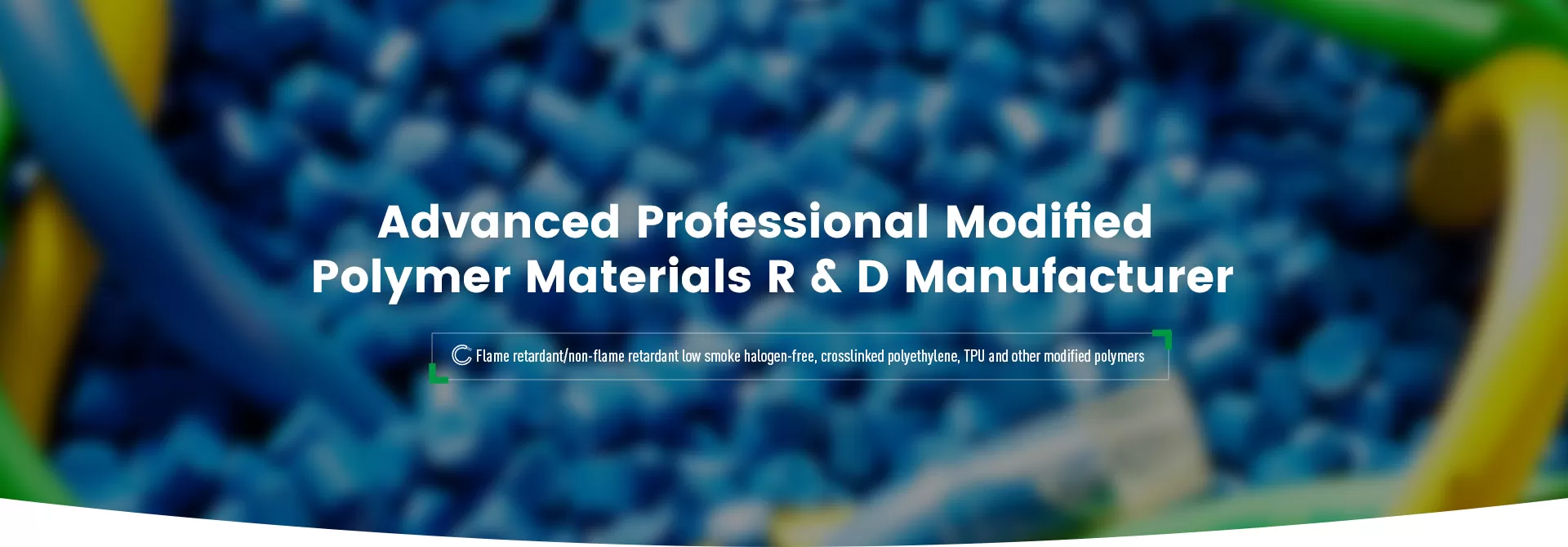
Thermoplastic polyurethane elastomer (TPU) plays an important role in modern materials engineering due to its excellent mechanical properties and environmental protection characteristics. Especially in the field of flame retardancy, TPU materials have achieved multiple properties such as low smoke, halogen-free and high temperature resistance through formula design, and have gradually become an important material for wire and cable sheathing, electronic component packaging and other fields. This article systematically explains the classification, key technical indicators and advantages of flame-retardant TPU in practical applications.
Flame-Retardant TPU is mainly divided into two categories according to the chemical matrix structure:
Polyester TPU: has good oil resistance and high mechanical strength, suitable for application scenarios requiring wear resistance and fatigue resistance;
Polyether TPU: has excellent low-temperature flexibility and hydrolysis stability, and is more suitable for use in humid or low-temperature environments.
From the Flame Retardant level, flame retardant TPU is divided according to UL 94 standard, mainly including:
V-0 level: the material combustion stops in a short time, and the dripping material does not ignite the cotton, which is suitable for high-safety occasions;
V-2 level: still has good self-extinguishing performance, but the dripping material may ignite the cotton, which is suitable for general flame retardant requirements.
In addition, according to the differences in process and performance, flame retardant TPU can also be subdivided into the following types:
| Category | Features | Applications |
| Halogen-free flame retardant type | Low smoke, halogen-free, environmentally friendly, compliant with RoHS and REACH requirements | Wire and cable sheaths, connectors |
| High temperature type (resistant to 130℃) | Strong thermal stability, suitable for high-load equipment | Industrial cables, power cables |
| Glass fiber reinforced type | Increased strength, low deformation rate | Structural parts, mechanical coatings |
| Special modified type | Such as anti-ultraviolet, anti-bacterial, anti-mildew | Medical cables, outdoor facilities |
Flame-retardant TPU has significant advantages in multiple key performance dimensions, providing reliable guarantees for its use in a variety of industrial applications:
Flame-retardant TPU materials have extremely strong tear resistance and are suitable for use in high-friction and high-tension environments. In actual tests, its tear strength is much higher than that of soft PVC and traditional rubber elastomers.
Flame-retardant TPU has high elasticity and resilience. The tensile strength of some products can reach 70 MPa, and the elongation at break exceeds 1000%, which greatly improves the fatigue resistance of the product during deformation.
Flame-retardant TPU shows extremely strong stability when exposed to mechanical stress, chemical corrosion or ultraviolet light for a long time. Actual measured data shows that its wear life is more than 5 times that of natural rubber, making it the preferred material for industrial pipeline sheaths and dynamic cables.
Flame-retardant TPU does not contain halogens, does not release corrosive gases, significantly reduces smoke concentration and toxicity in fire situations, widely meets environmental safety standards such as EN 45545 and IEC 60332-1, and is suitable for high-standard industries such as rail transit and medical equipment.
Flame-retardant TPU is widely used in the fields of wire and cable outer sheaths, hose coatings, insulation materials, etc., and is suitable for the following typical working conditions:
Communication and data cables: its softness and mechanical strength are suitable for high-speed signal transmission environments;
Industrial equipment cables: excellent oil resistance and chemical corrosion resistance extend the service life of cables;
Rail transit and automotive wiring harnesses: meet comprehensive requirements such as high temperature resistance, UV resistance, fire resistance and flame retardancy;
Medical cable systems: antibacterial and mildew-proof design, suitable for non-toxic and disinfectable use scenarios.
Some companies, such as Angreen, have developed a variety of functional flame-retardant TPU materials to meet customized needs, such as:
· Anti-UV halogen-free flame-retardant TPU sheath material;
· Antistatic flame-retardant TPU sheath material;
· Medical-grade antibacterial sheath;
· High temperature and heat-resistant type;
· Mildew-proof composite materials.
Flame-retardant TPU materials are developing towards higher flame-retardant grades, stronger functional integration and better environmental adaptability. Combined with nano-flame-retardant technology, inorganic modification systems and other means, it is expected to further improve its comprehensive performance and expand its application in aerospace, marine engineering and new energy vehicles.
At the same time, with the global emphasis on green materials, halogen-free and low-smoke TPU will play a greater role in replacing PVC and traditional rubber, and become the main player in the next generation of high-performance cable sheath materials.
Flame-retardant TPU not only has good material properties, but also meets the comprehensive requirements of modern industry for safety, environmental protection and durability. Driven by technological progress and environmental regulations, flame-retardant TPU will continue to expand its application in cable manufacturing, electronic connections, medical equipment and other fields, becoming an important supporting material for the high-performance polymer market.